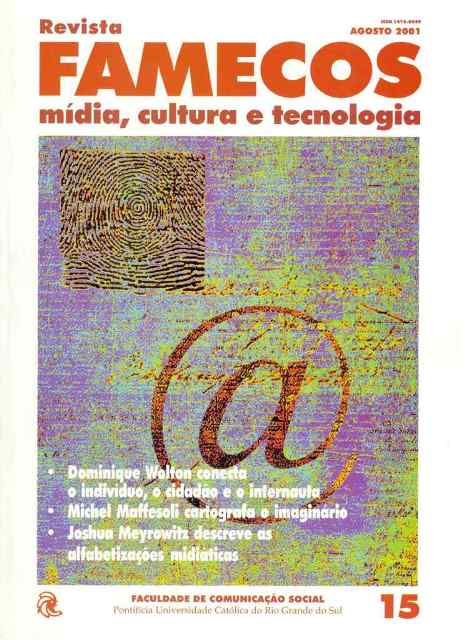The different media literacy
DOI:
https://doi.org/10.15448/1980-3729.2001.15.3125Keywords:
Technology, media grammar, languageAbstract
There are at least three different types of media literacy, each linked to a different conception of what we mean by the term media. The notion that media are conduits that carry messages points to the need for media content literacy. The idea that media are distinct languages suggests the need for media grammar literacy, that is, understanding the use of production variables within each medium. The conception of media as environments suggests the need to grasp the in uence of the relatively xed characteristics of each medium (medium literacy), both on individual communications and on social processes in general. Medium literacy, in particular, offers some special thoughts into the origins, problems, and possibilities of the media literacy movement.
Downloads
References
ALTHEIDE, D.L. Creating reality: How TV news disorts events. Beverly Hills, CA: Sage, 1976.
BARNOUW, E. The sponsor: Notes on a modern pontentate. New York: Oxford University Press, 1978.
GANS, H.J. Deciding what´s news. New York: Vintage, 1979.
HALLIN, D. We keep America on top of the world: Television journalism and the public sphere. New York: Routledge, 1994.
HERMAN, E. S. e CHOMSKY, N. Manufacturing consent : The political economy of the mass media. New York: Pantheon, 1988.
McLUHAN, M. Understanding media: The extensions of man. New York: Signet, 1964.
MANOFF, R.K. e SCHUDSON, M. (eds.) Reading the news. New York: Pantheon Books, 1986.MEYROWITZ, J. No sense of place: The impact of eletronic media on social behavior. New York: Oxford University Press, 1985.
______. Television and interpersonal behavior: Codes of percepcion and response. In G. Gumpert & R. R. Cathcart (Eds.), Inter/Media: Interpersonal communication in a media world (3rd. Ed., pp.253-272). New York: Oxford University Press, 1986.
______. Medium theory. In D. Crowley & D. Mitchell (Eds.)
Communication theory today (pp. 50-77). Cambridge, England: Polity Press, 1994.
PAPERT, S. The Children´s machine: Rethinking school in the age of the computer. New York: Basic Books, 1993.
SAVAN, L. The Sponsored life: Ads, TV, an Amarican culture. Philadelphia:Temple University Press, 1994.
SCHRAMM, W. Men, messages, and media: A look at human communication. New York: Harper & Row, 1973.
SCHUDSON, M. The power of news. Cambridge, MA: Harvard University Press, 1995.
SIGAL, L. Reporters and offi cials. Lexington, MA: Heath, 1973.
WEBSTER, K. e MEYROWITZ, J. Whose views make news? Cable in the classroom, p. 10-11, July/August, 1995.
ZETTL, H. Sight-sound-motion: Applied media aesthetics (2a ed.). Belmont, CA: Wadsworth, 1990.
Downloads
Published
How to Cite
Issue
Section
License
Copyright
The submission of originals to Revista Famecos implies the transfer by the authors of the right for publication. Authors retain copyright and grant the journal right of first publication. If the authors wish to include the same data into another publication, they must cite Revista Famecos as the site of original publication.
Creative Commons License
Except where otherwise specified, material published in this journal is licensed under a Creative Commons Attribution 4.0 International license, which allows unrestricted use, distribution and reproduction in any medium, provided the original publication is correctly cited.






